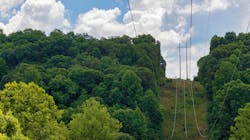Maine Supreme Court Rules State-Issued Lease for NECEC Transmission Project Valid
In a long-anticipated decision, the Maine Supreme Judicial Court ruled that the State of Maine acted within its constitutional authority in granting a lease to NECEC developers for the New England Clean Energy Connect (NECEC) transmission line project. When completed, the project will connect 1200 MW of clean hydropower to the New England electrical grid.
The following is a statement from Scott Mahoney, senior vice-president – general counsel at AVANGRID:
“Today’s ruling by the Law Court is yet another step in the right direction for Maine’s renewable energy future. The serious need for the NECEC project to reduce our reliance on fossil fuels, combat climate change, and lower regional energy prices remains unchanged. For the past three years, despite opposition funding by fossil fuel interests, every regulatory body at the local, state, and federal level has thoroughly reviewed the New England Clean Energy Connect and all agree the NECEC is beneficial for Mainers. We are pleased with today’s ruling and look forward to determining our next steps for this critical project.”
The court issued its decision in a 50-page ruling, which can be found here. Key sections follow:
“Based on the lack of any “significant and legitimate” countervailing public purpose to justify the voiding of the 2020 lease, we conclude that the Contract Clause does not permit the impairment caused by section 1 of the Initiative (page 34).
The relevant facts in the administrative record are free of ambiguity or dispute. The two tracts of public reserved lands in question — Johnson Mountain and West Forks Plantation — occupy a combined area of 1241 acres in the Upper Kennebec Region. Their physical characteristics include water bodies, wetlands, and primarily standing timber. There are no unique features or protected areas on either tract. Their predominant use has been for timber harvesting every twenty years, but there are also recreational facilities and an existing 100-foot-wide, three-mile-long utility transmission line on the tracts. The essential purposes of the tracts are to support the multiple uses currently being made of them consistent with the Bureau’s management plans (page 46-47).
Given the uses, physical characteristics, and essential purposes of the Johnson Mountain and West Forks Plantation tracts, we see no reasonable basis for deciding that a second utility transmission line occupying 2.6% of the combined tracts could significantly alter the physical characteristics of so much of the remaining 97.4% that the multiple-use purposes for which the tracts are held would be frustrated (page 48).”
